11 largest school districts in the country—and how they’re responding to COVID-19
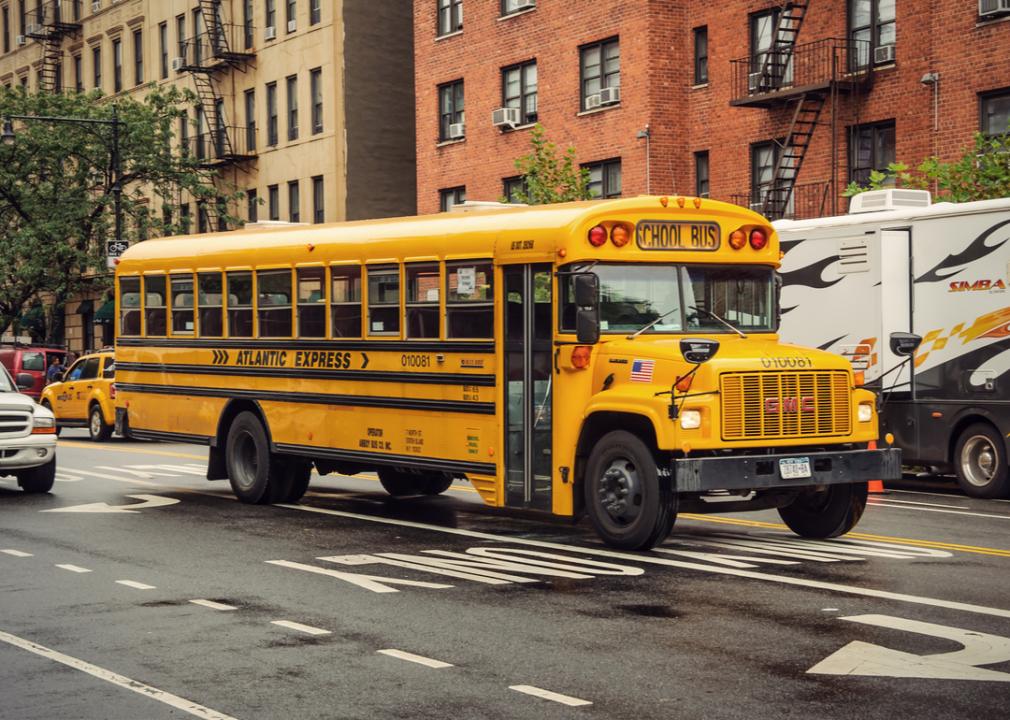
AR Pictures // Shuttterstock
11 largest school districts in the country—and how they’re responding to COVID-19
By March 25, 2020, all U.S. public school buildings were closed due to the spread of COVID-19—changing the lives of educators, students, and students’ families overnight. School administrators scrambled to create remote protocols and programming where none such model existed in many cases. Some districts and students were more prepared than others as the pandemic revealed gross inequities in access to education. The 2020-2021 school year saw many districts re-opening classrooms, though often in a hybrid format that combined both remote and in-person options. Many parents took the remote-only option that some schools offered or even switched their children to homeschooling.
HeyTutor researched each district’s policies in response to the COVID-19 pandemic, including the latest Omicron wave, citing data from Niche on the largest school districts in America. Supplementary data came from the New York City Department of Education.
The Delta variant popped up just as the country’s health experts thought we were gaining a foothold in slowing community spread, but the 2021-2022 year finally seemed to signal a return to fully in-person learning. Education and mental health experts cited lost academic, social, and emotional skills as critical reasons to bring children back in school and keep them there. For many students, academic growth was disrupted after they lost continuous access to in-person learning, which deepened the achievement gap in many classrooms. This disparity was most pronounced in students from communities of color and from low-income households, who disproportionately experienced more challenges trying to access digital learning.
While many students have resumed in-person instruction in public school districts, the Omicron variant has created skyrocketing positivity rates that made reopening schools after the winter break difficult for many. Many districts implemented mandatory masking as well as stricter ventilation protocols, including the introduction of MERV 13 filters to capture fine particles in the air. Vaccinations were encouraged for everyone old enough to get them. However, staff shortages, low student attendance numbers, and clashes between districts and teachers’ unions continue to plague school districts and make it difficult for students to recover what they’ve lost.
Keep reading to discover how the 11 largest school districts in the country are responding to COVID-19.
![]()
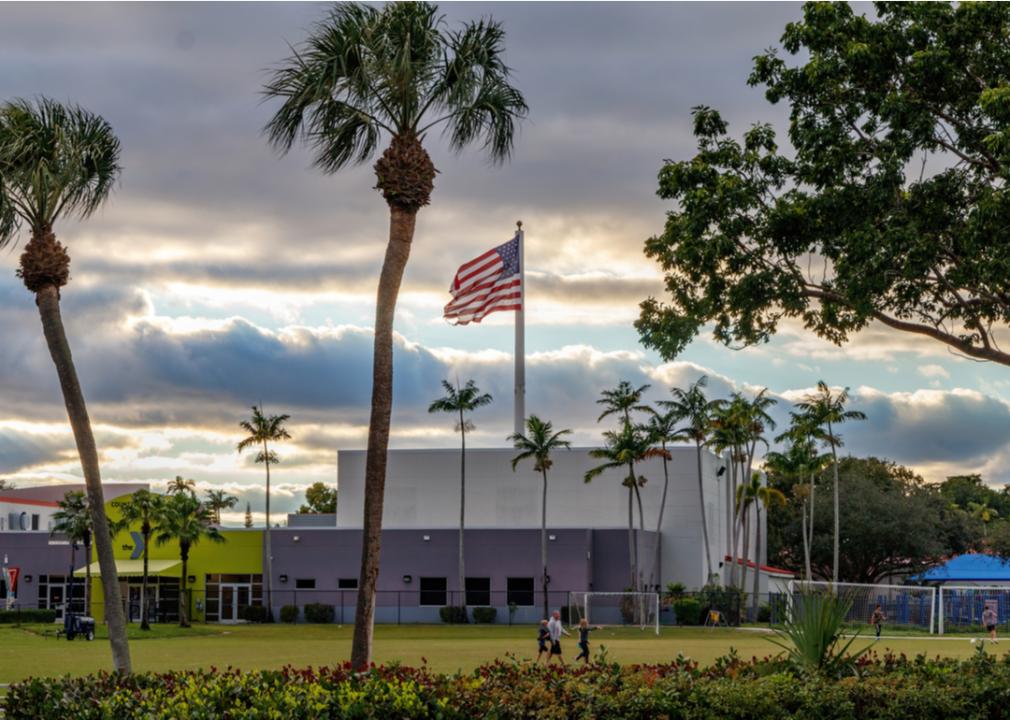
Microfile.org // Shuttterstock
#11. Palm Beach County School District (West Palm Beach, Florida)
– Total schools: 237
– Total students: 194,675
Palm Beach County School District maintains an online district COVID dashboard that disseminates all the latest information regarding the virus and its impact on its students and staff. The dashboard also contains the number of confirmed cases since the start of the 2021-2022 school year in August. As of Jan. 21, 2022, a mandatory facial covering policy was reinstated for adults (including staff, vendors, and visitors) in response to the highly transmissible Omicron variant of the virus, though masks are optional for students. The superintendent continuously reviews this policy, but as of this date, the positivity rate is trending above 20%.
Other mitigation strategies in the district include installing MERV 13 and portable HEPA units for air filtration throughout classrooms. Like many other school districts, there are also hygiene practices in place to address the virus, including offering hand sanitizer and deep cleaning. Contact tracing continues throughout the district in an effort to track the spread of COVID-19.
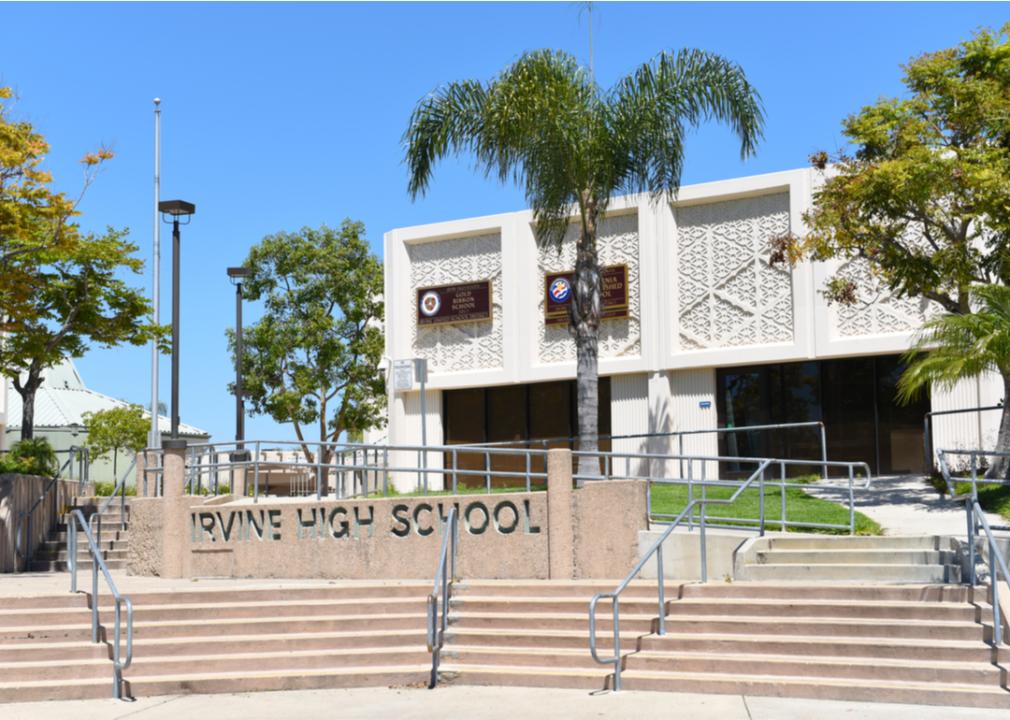
Steve Cukrov // Shutterstock
#10. Orange County Public Schools (Orlando, Florida)
– Total schools: 260
– Total students: 208,875
To reduce COVID-19 transmission rates, Orange County Public School buses keep certain back windows and top hatches open and drivers run the A/C ventilation system, which improves the air change rate. Ventilation in schools has been improved as well with HVAC systems upgraded to MERV 13 in keeping with the American Association of Heating and Refrigeration Engineers recommendation. Filters are also changed frequently—every 30 days in portables and every 90 days in buildings—and HVAC systems extend the intake of outside air before and after occupancy as a way to flush the air.
While a decision to move to remote learning would be made in consultation with the Florida Department of Health in Orange County, students in grades three through 12 continue to bring home their devices every day, and those without internet access can seek assistance through Connect2Compete, an affordable internet service available to families who qualify for the free lunch program.
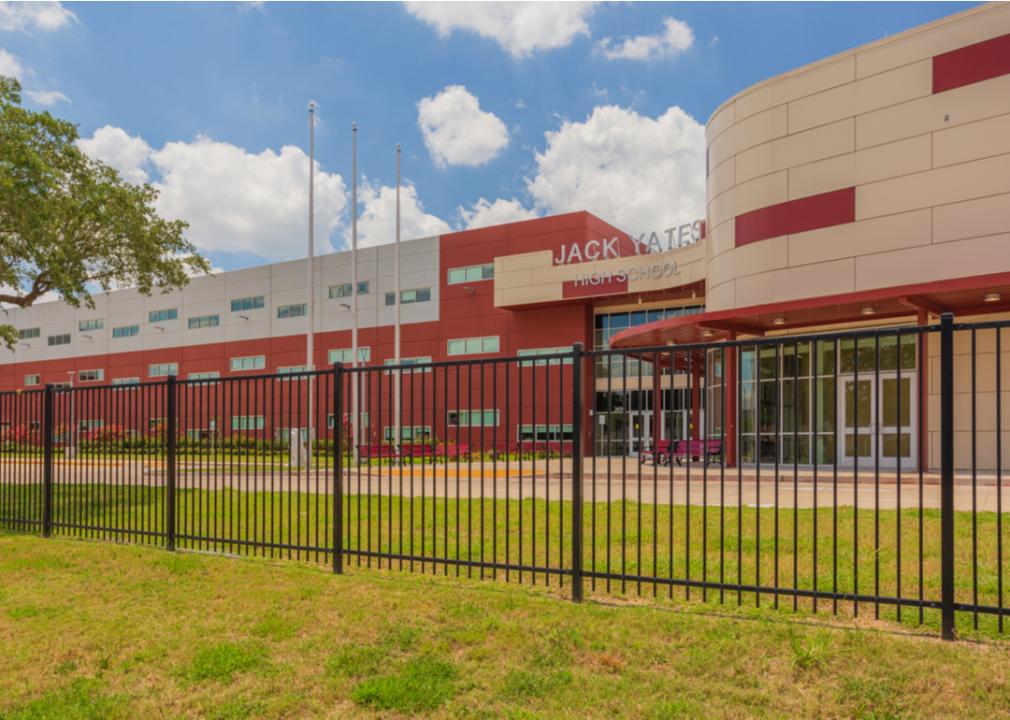
Patrish Jackson // Shutterstock
#9. Houston Independent School District (Houston)
– Total schools: 280
– Total students: 210,061
The Houston Independent School District had a ReadySetGo Plan in place when students headed back to school in 2021-2022. The plan outlined safety protocols during the COVID-19 pandemic and included mandatory masking for all staff, students, and school visitors. While the district does not mandate COVID-19 testing, they do encourage it and require permission from a parent or legal guardian to participate.
As of January 2022, students and staff can access free testing on campus. Physical distancing of three feet, when possible, is also encouraged. Buses are running at full capacity, but students sit in assigned seating to allow for contact tracing in the event of virus transmission. For sporting events, spectator capacity is limited to 50%, and all gatherings—including meetings and events held for school purposes—must be held virtually, effective Jan. 3, 2022.
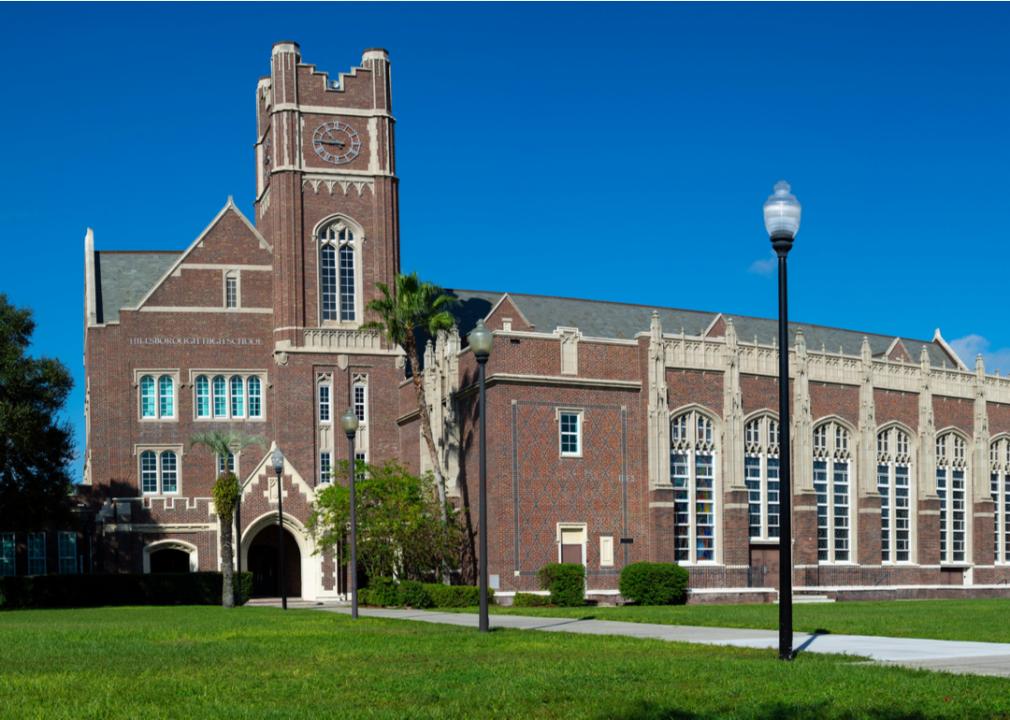
Daniel Wright98 // Shutterstock
#8. Hillsborough County Public Schools (Tampa, Florida)
– Total schools: 300
– Total students: 223,305
When schools closed for winter break, the district’s COVID-19 positivity rate was 3 to 4%. When they reopened, it was at 14%. At a January 2022 press conference, Addison Davis, Hillsborough superintendent, credited this jump to Omicron and the gatherings that often take place during the holidays. According to Davis, Hillsborough was the first school district in the nation to implement MERV 13 air filters, and he noted that the district started all its HVAC systems so airflow would be optimized for the return to school.
In addition to educating the community about masking, handwashing, and disinfection methods, the district also offers remote learning options for students who are quarantined and set up additional testing and vaccination sites since the start of the spring semester.
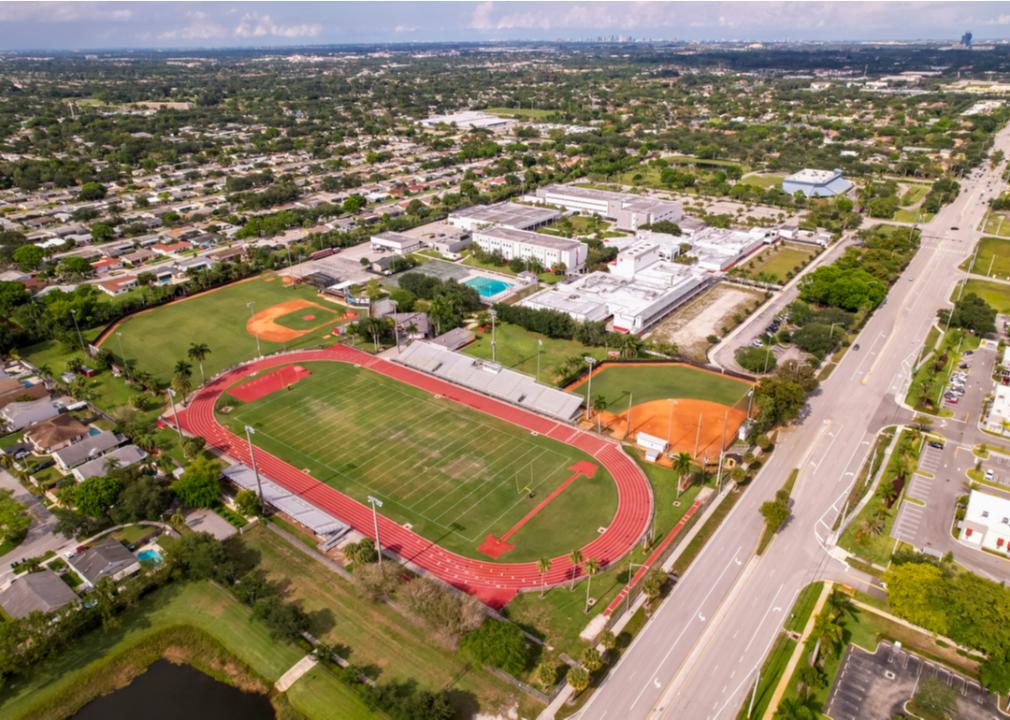
Felix Mizioznikov // Shutterstock
#7. Broward County Public Schools (Fort Lauderdale, Florida)
– Total schools: 328
– Total students: 269,172
Broward County Public Schools continue to maintain disinfection protocols like handwashing and stocking schools with hand sanitizer, and Superintendent Dr. Vickie Cartwright stressed the importance of social distancing whenever possible. According to a superintendent update on Jan. 7, 2022, the district also follows a 10-day return to school after a positive test or onset of symptoms, which is more than the CDC recommends. The district also provides remote learning options, like online classes and access to instructors, for students who are in quarantine. They also ask students to complete an at-home daily health screening.
In response to a post on social media about students planning to protest safety protocols, the district released a Jan. 20, 2022 memo citing that they provide face coverings free of charge but do not force staff or students to wear them, though any vendors or visitors to district schools must wear masks.
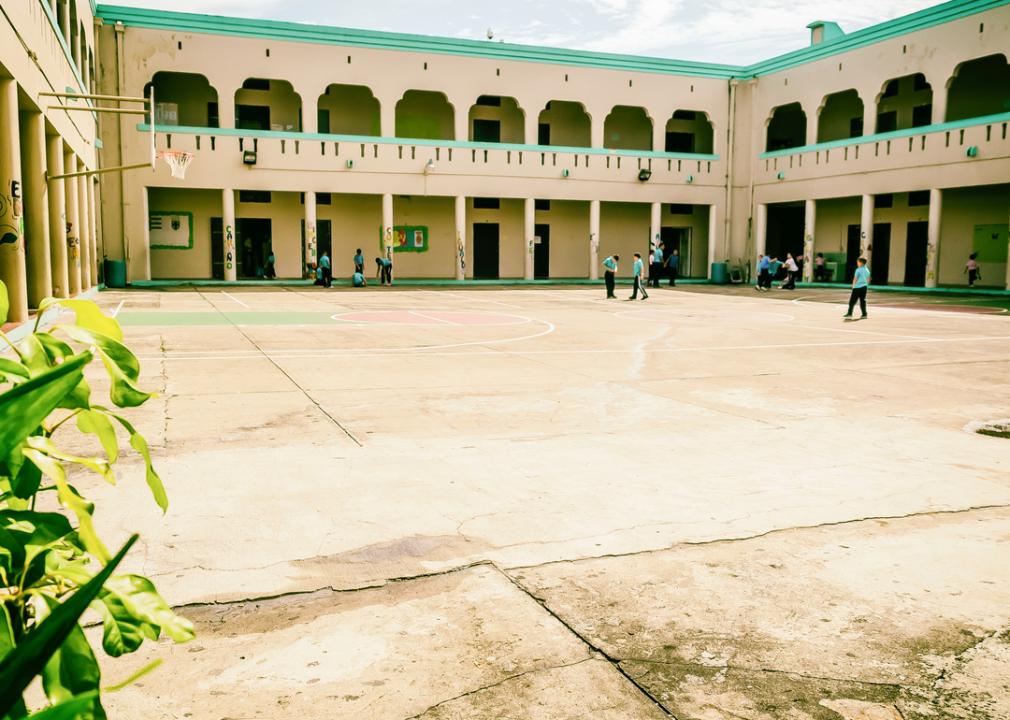
Dora Ramirez // Shutterstock
#6. Puerto Rico Department of Education (Hato Rey, Puerto Rico)
– Total schools: 847
– Total students: 292,518
On Nov. 18, 2021, the U.S. Department of Education approved Puerto Rico’s American Rescue Plan Elementary and Secondary School Emergency Relief (ARP ESSER) plan allowing the remaining ARP ESSER funds to be released. These funds will help with the district’s COVID-19 response. The Puerto Rico Department of Education also collaborated with the Puerto Rico Department of Health to aid with vaccine awareness by conducting three different campaigns on COVID-19 vaccination. ARP ESSER funds will also provide additional tutoring services from the University of Puerto Rico with priority given to those students most affected by the pandemic. On Dec. 22, 2021, Puerto Rico also mandated booster shots in both the health and education sectors for those over age 18.
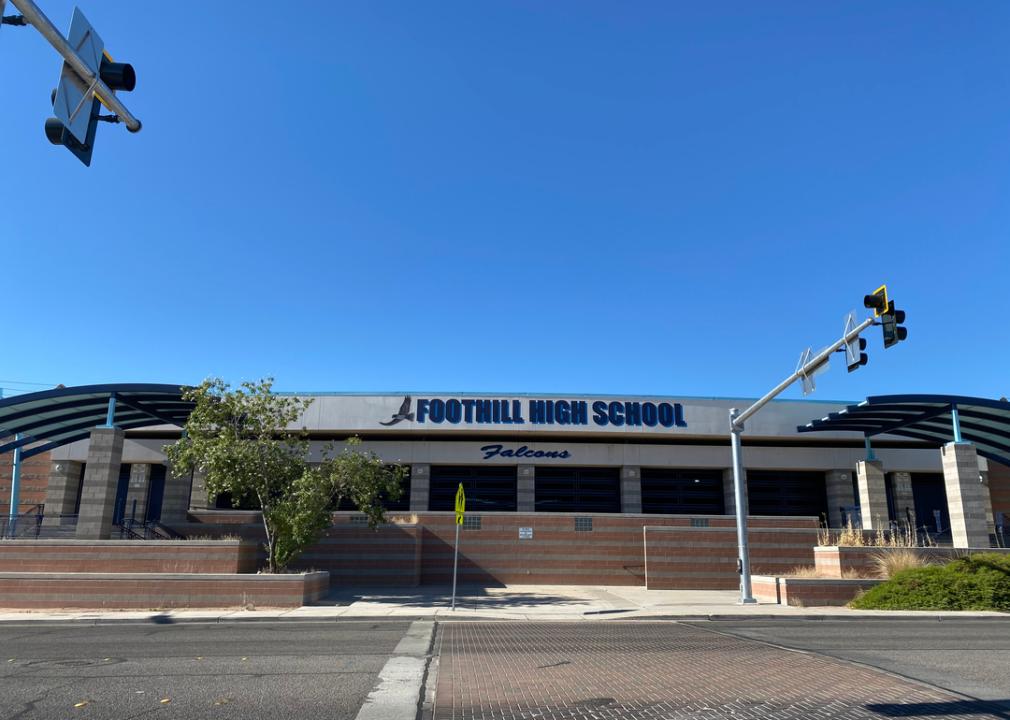
Katherine Carey // Shutterstock
#5. Clark County School District (Las Vegas)
– Total schools: 374
– Total students: 328,991
The district instituted a five-day pause and reopened school on Wednesday, Jan. 19, 2022, to allow for recovery time from staffing shortages due in large part to the COVID-19 Omicron variant. The district also implemented staff training on Jan. 4, 2022, to prepare for a spring semester return. The training discussed social distancing requirements for activities and seating charts for both staff and students to improve contact tracing. Daily health checks for staff are mandatory and the district continues to follow the state’s masking mandate, which is based on transmission rates. It also continues to clean district schools daily with UV disinfection devices such as the R-Zero UV-C Arc Unit.
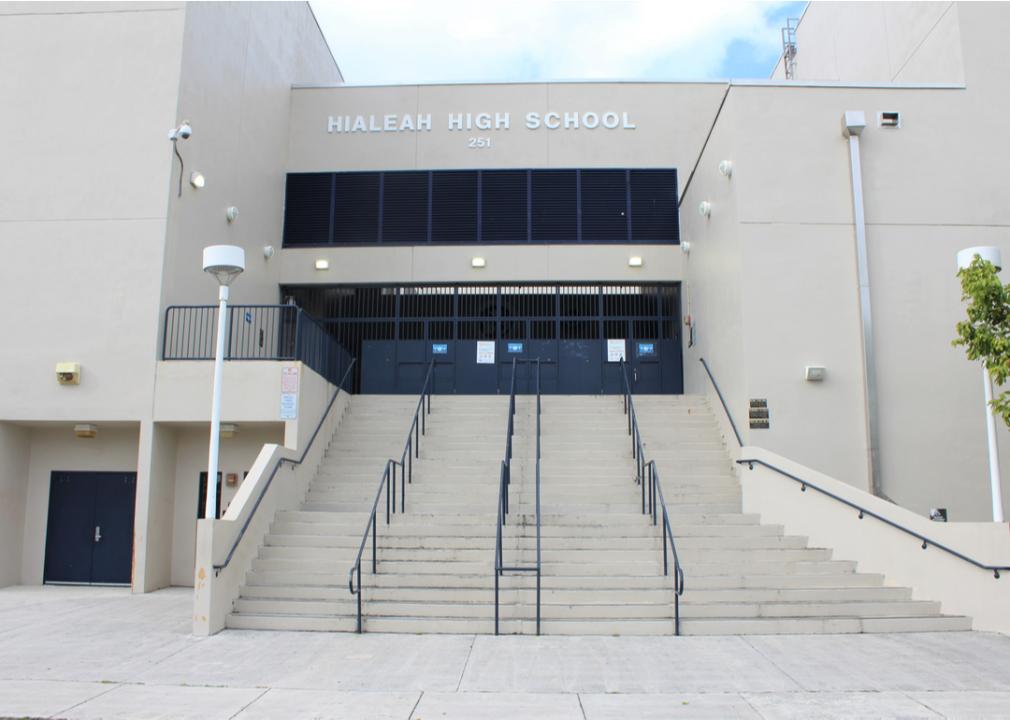
Blueee77 // Shutterstock
#4. Miami-Dade County Public Schools (Miami)
– Total schools: 516
– Total students: 347,307
Due to the Omicron variant, Miami-Dade County Public Schools updated its COVID-19 protocols effective Jan. 3, 2022. All employees are required to wear masks at school and when driving with two or more people in district-owned vehicles. The district also expanded testing and vaccinations in partnership with local health agencies. At the start of the school year, the district provided a back-to-school opening guide. Some of the steps to protect students and staff from COVID-19 include limiting the number of people in certain areas, such as restrooms and elevators, to hold a maximum of two people at a time. Staff are also expected to use hospital-grade germicide in their disinfection efforts.
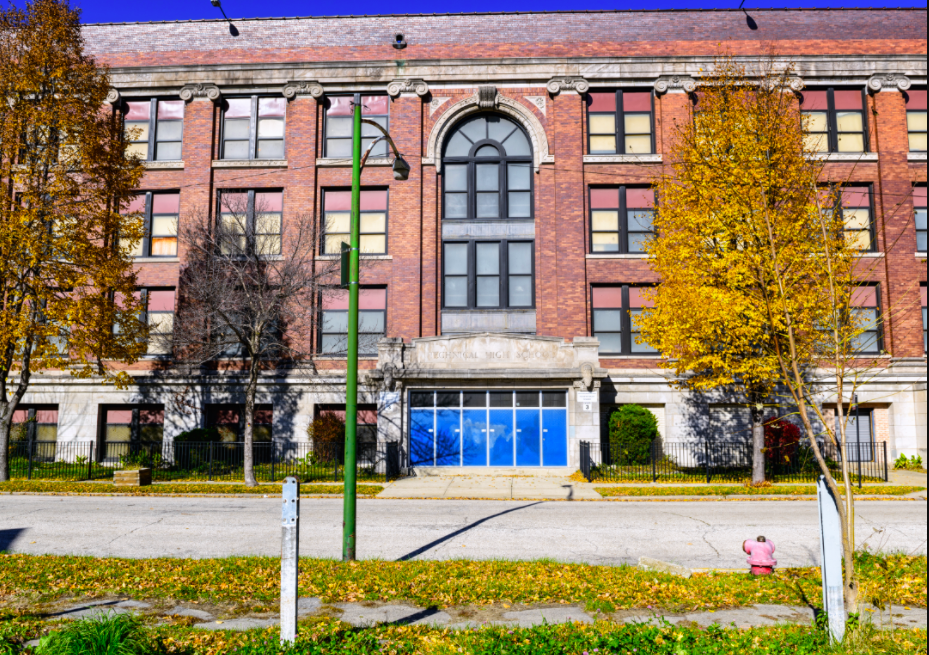
Canva
#3. Chicago Public Schools (Chicago)
– Total schools: 653
– Total students: 347,484
Chicago Public Schools received a significant amount of media attention due to disagreements between the city and the Chicago Teachers Union (CTU) over returning to in-person teaching after the winter break. The CTU wanted a remote-learning format due to high positivity rates and the highly transmissible Omicron variant, but the district canceled school for a week in response. The city and the CTU finally reached an agreement, with the city offering more PPE and expanded testing for the student body, and using metrics based on individual schools to decide on any shifts to remote learning.
After the agreement, students in the district staged a walkout on Jan. 14, 2022, protesting what they believed to be a lack of appropriate safety protocols and asking for a COVID-19 stipend and a two-week remote learning period.
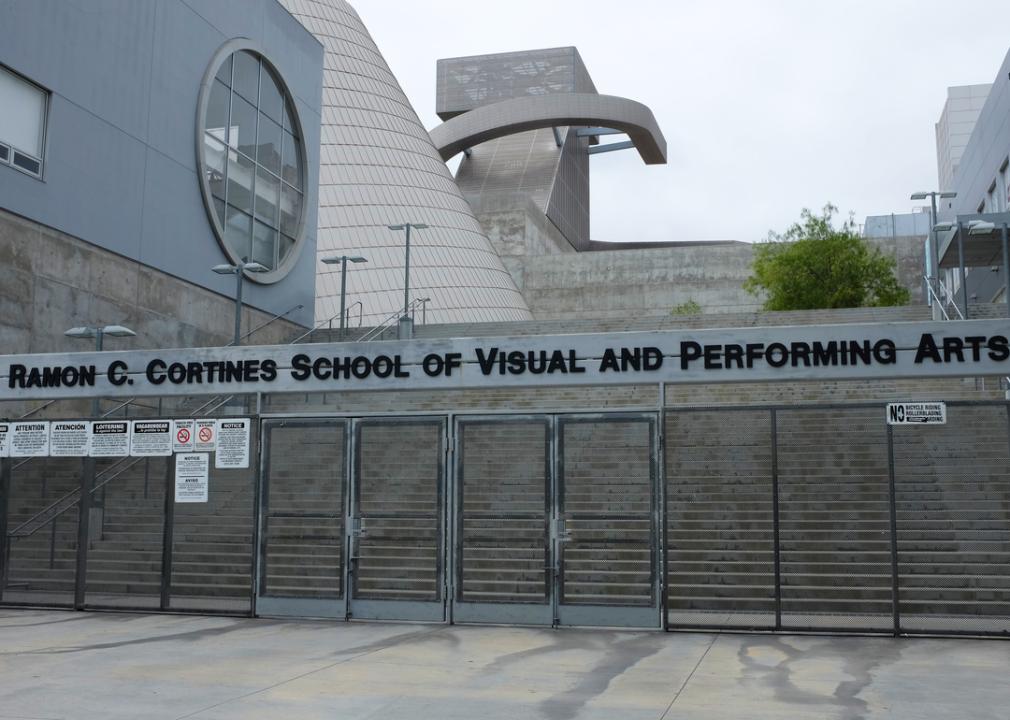
Steve Cukrov // Shutterstock
#2. Los Angeles Unified School District (Los Angeles)
– Total schools: 785
– Total students: 483,234
In September 2021, the Los Angeles Unified School District became the largest school district to institute a COVID-19 vaccine mandate, which required everyone age 12 and older to be fully vaccinated by January 2022. Students who failed to comply would be switched to online schooling. The school district later stepped back and delayed the student vaccination mandate to the fall of 2022.
School staff are still required to be vaccinated, and during the first week of December 2021 nearly 500 employees were fired for failing to meet the requirement. For students and staff who attend classes in person, weekly COVID-19 testing is mandatory. This has created long lines for students returning for the spring 2022 semester, but the district has continued to keep schools open with mandatory universal masking in place, and students entering campus must provide a negative COVID-19 test.
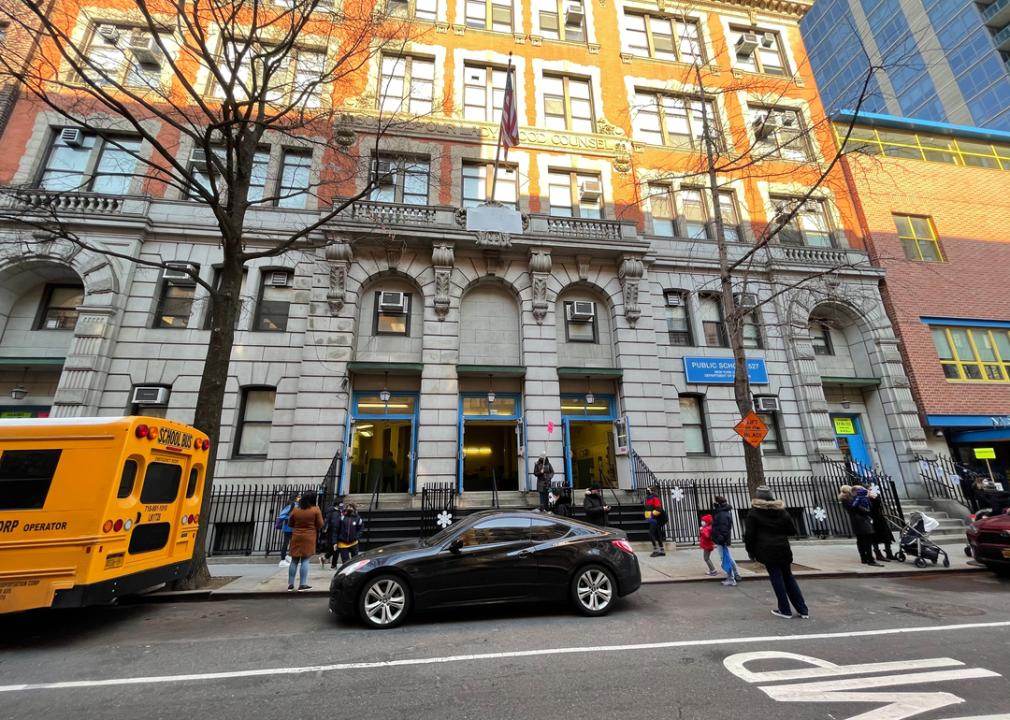
Xackery Irving // Shutterstock
#1. New York City Department of Education (New York, New York)
– Total schools: 1,876
– Total students: 1,094,138
Several New York City schools closed just before the 2021 winter break. The New York City Department of Education allowed schools to open in-person after the break but due to rising COVID-19 cases, New York Mayor Eric Adams considered a temporary remote learning option on Jan. 13, 2022, with support from the United Federation of Teachers. On Jan. 11, 2022, students protesting the COVID safety and remote options walked out of schools. New guidelines make it possible for all sick students, whether they are ill from COVID-19 or something else, to access virtual classrooms. Students who attend class remotely, whether they test positive for the virus or not, are still marked as present.
This story originally appeared on HeyTutor
and was produced and distributed in partnership with Stacker Studio.